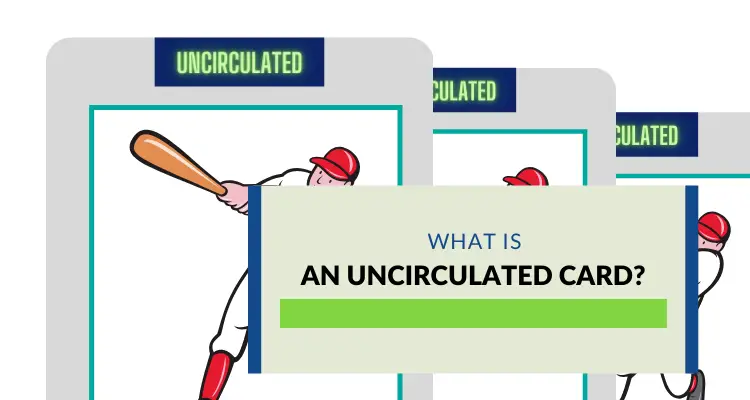 Ryan Barone (@ballcardgenius, Card Expert) is a lifelong member of the hobby. He has been quoted in PSA Magazine, and his content has regularly been mentioned in “Quick Rips” (the Topps RIPPED Newsletter) and across other hobby publications. hello@ballcardgenius.com; Last Time Ago LLC dba Ballcard Genius.
Ryan Barone (@ballcardgenius, Card Expert) is a lifelong member of the hobby. He has been quoted in PSA Magazine, and his content has regularly been mentioned in “Quick Rips” (the Topps RIPPED Newsletter) and across other hobby publications. hello@ballcardgenius.com; Last Time Ago LLC dba Ballcard Genius.
Affiliate Disclosure: This post contains affiliate links. As I am a part of the eBay Partner Network and other programs, if you follow these links and make a purchase, I’ll receive commission. As an Amazon Associate, I earn from qualifying purchases.
Alt card value is a proprietary calculation that estimates a card’s real time market worth. Alt is a graded traded card platform that calculates “Alt Value” based on recent transactions and “systemic market knowledge.”
While we highlight Alt as one of the best sports card apps, it really is a full on platform experience more than it is an app.
Accuracy
In terms of Alt Value accuracy, the number of comparables or “comps” impacts the degree of confidence—ranging from low (when there is less data for rarer cards) to high (when there is a lot of data for, say, base cards).
That’s the book definition, but what does that really mean for the accuracy of a card’s Alt Value?

Well, it’s going to fluctuate greatly between cards, with some Alt Values being close to what a card is selling for, while other times being off quite a bit (examples below).
Adoption
Do members of the hobby use the Alt Value? I personally don’t, and I’m not really sure if others do. Frankly, I’ve never heard “Alt Value” come up in conversation or negotiation when buying or trading cards.
While Alt Value takes in transactions from a number of different platforms, I’d say most people still use eBay sold card data or “eBay value” or some type of average of the latest sales. I personally use eBay value a lot, but I also put a lot of weight on what’s currently for sale as well.
Meaning, if the last three sales of a card were $100, $90, and $80, and there was a card currently listed at $100, I’d have a hard time agreeing that the card is actually worth $100 (especially if it has been sitting for sale for a while.)
Feedback
To go along with how much people are actually using “Alt Value” here are some thoughts from hobby members themselves, taken from Twitter.
One, I think many people still question what Alt Value is, how it’s calculated, and how it should be used.
@altxyzofficial how can a card have last 3 sales of 600/735/711 but the Alt value is $472? Just curious how this works? @CardPurchaser pic.twitter.com/YW0XLBZ9V9
— Dennis Del Vecchio (@Dennisjr60) August 6, 2022
In response to something like the above, I think most people would simply use the clear indicator that the card has sold for between $600-$711. And while that might be a large gap, the difference between the $472 Alt Value and $600 is greater.
I know it’s not always possible, but to see some sort of response and explanation from tweets like those might help with adoption.
Alt value is literally useless idk who needs to hear this but it gives me a headache when people value a card based on Alt value and use that when trying to buy something.
— Jakes Cards and Sales (@CardsJakes) June 9, 2023
I think one issue with Alt Value is it “takes two to tango” and if one side of the negotiation truly believes in it while another doesn’t even want to hear it brought up, it’s going to make it tough to ever agree on anything.
I've completed zero deals with the following:
— NomadCards (@NomadCards) May 16, 2023
– "I want"
– "I like"
– "but the ALT value"
– "I was going to send it to PSA"
– "hm, lowest, best?"
– "give me a steal"
– "alr j lmk"
On the other hand, while some seem to be against Alt Value, others (myself included) do in fact use Alt’s data to look back at a much longer window of transactions on a card. That is, while eBay will limit information to the last 365 days, the Alt platform extends further.
Seeing a lot of drama about ALT…
— No Holds Cards (Ari) (@NoHoldsCards) March 8, 2023
I don’t understand why anyone actively uses ALT value to begin with.
If it’s in the yellow or red it’s a full on guess.
Use ALT to find comps from eBay, Goldin, PWCC, etc all under one umbrella. That should be the beginning and end of its use.
Remedies
So, what’s the play if you have a question about a specific card’s Alt Value? According to the tweet below:
“The most convenient way is to click the gold chat bubble on the bottom right of our website. Once there, you can click “Alt Value looks off” or type any other feedback you have and the team will respond ASAP.”
The most convenient way is to click the gold chat bubble on the bottom right of our website. Once there, you can click "Alt Value looks off" or type any other feedback you have and the team will respond ASAP. pic.twitter.com/6pko2rP7h8
— Alt (@altxyzofficial) March 25, 2021



